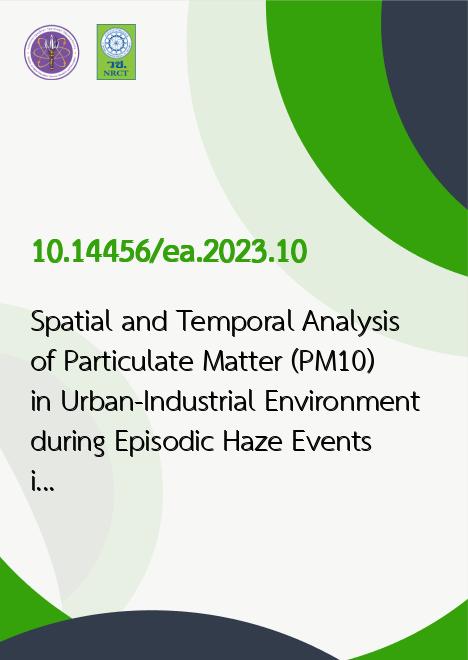
|
Spatial and Temporal Analysis of Particulate Matter (PM10) in Urban-Industrial Environment during Episodic Haze Events in Malaysia |
|---|---|
| รหัสดีโอไอ | |
| Creator | 1. Izzati Amani Mohd Jafri 2. Norazian Mohamed Noor 3. Nur Alis Addiena A Rahim 4. Ahmad Zia Ul-Saufie 5. Zulkarnain Hassan 6. Gy?rgy Deak |
| Title | Spatial and Temporal Analysis of Particulate Matter (PM10) in Urban-Industrial Environment during Episodic Haze Events in Malaysia |
| Publisher | Thai Society of Higher Education Institutes on Environment |
| Publication Year | 2566 |
| Journal Title | EnvironmentAsia |
| Journal Vol. | 16 |
| Journal No. | 1 |
| Page no. | 111-125 |
| Keyword | Air quality, Air quality modeling, Haze, Particulate Matter (PM10), Pearson correlation |
| URL Website | http://www.tshe.org/ea/index.html |
| Website title | EnvironmentAsia |
| ISSN | 1906-1717 |
| Abstract | Haze episode in Malaysia typically takes place during the dry monsoon season. As a result,high concentration of atmospheric particles was recorded primarily brought by transboundaryair pollution from the neighbour country. Therefore, this study aims to evaluate and comparethe level of particulate matter (PM10) at urban-industrial areas during the episodic haze episodesin Malaysia. Hourly PM10 concentration with the concentration of gaseous air pollutants suchas NOx, NO2, SO2, CO and O3 and meteorological parameters (relative humidity, temperature,wind speed) at urban-industrial areas namely Shah Alam (Selangor), Nilai (Negeri Sembilan),Bukit Rambai (Melaka) and Larkin (Johor), during the haze episode in 1997, 2005, 2013 and2015 were used for analysis. In this study, spatio-temporal and correlation analysis were usedto provide an overview of the distribution pattern and examine the relationships betweenthe gaseous air pollutants and meteorological parameters with PM10 concentration. From thedescriptive statistics, it was observed that PM10 level for all study areas were skewed to the right(> + 1) indicating occurrences of extreme events. A significant peak of PM10 concentration foreach year of haze events were observed to be started in June or during the southwest monsoon tothe inter monsoon in October. The occurrence, duration and impact of 1997 haze was detectedto be identical to the 2015 haze event that reached its peak in October. From the correlationanalysis, PM10 concentration were strongly correlated to the CO concentration (r > 0.5) duringHigh Particulate Event (HPE). Very weak relationship of PM10 level with meteorologicalparameters (r < 0.3) were observed. Interestingly, O3 level shows very strong correlation withthe meteorological parameters during HPE. The findings provide comprehensive evaluationon PM10 level during the historic haze episodes, thus can help the authorities in developingpolicies and guidelines to effectively monitor and reduce the negative impact of haze events. |